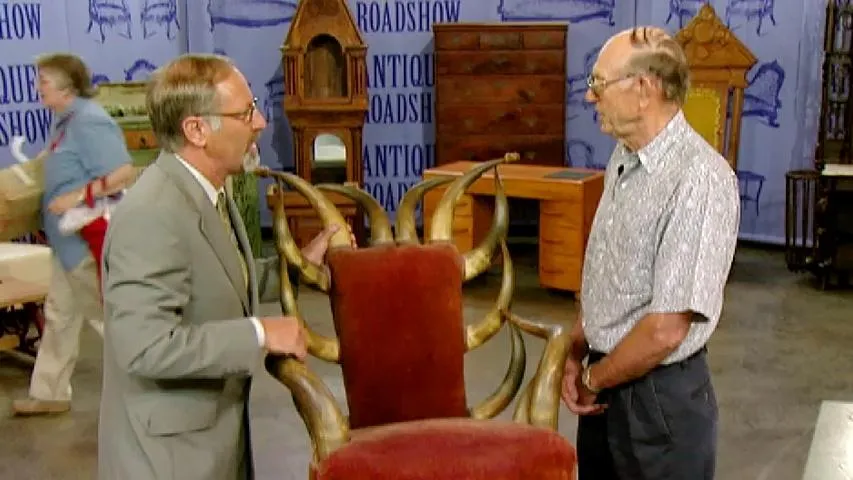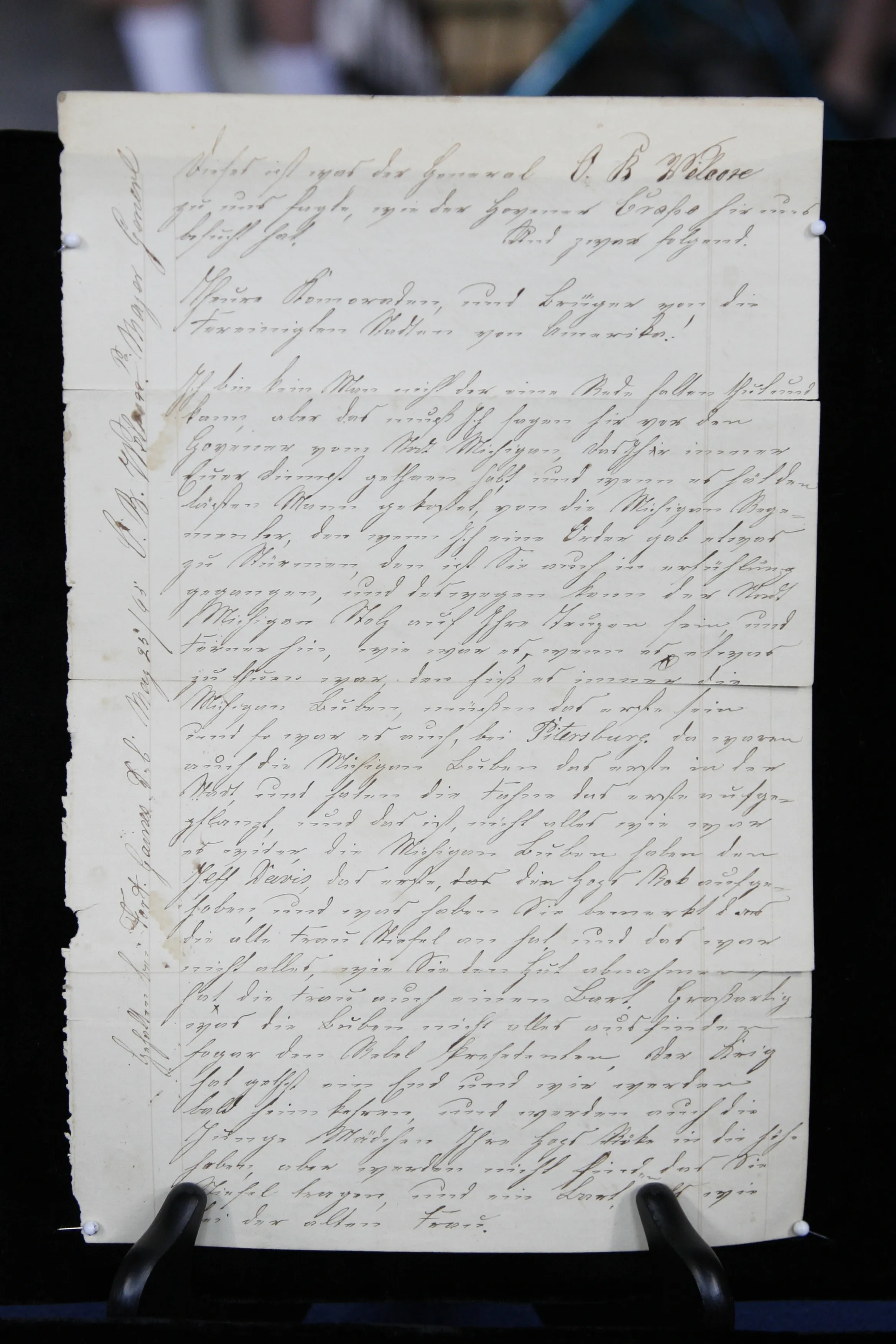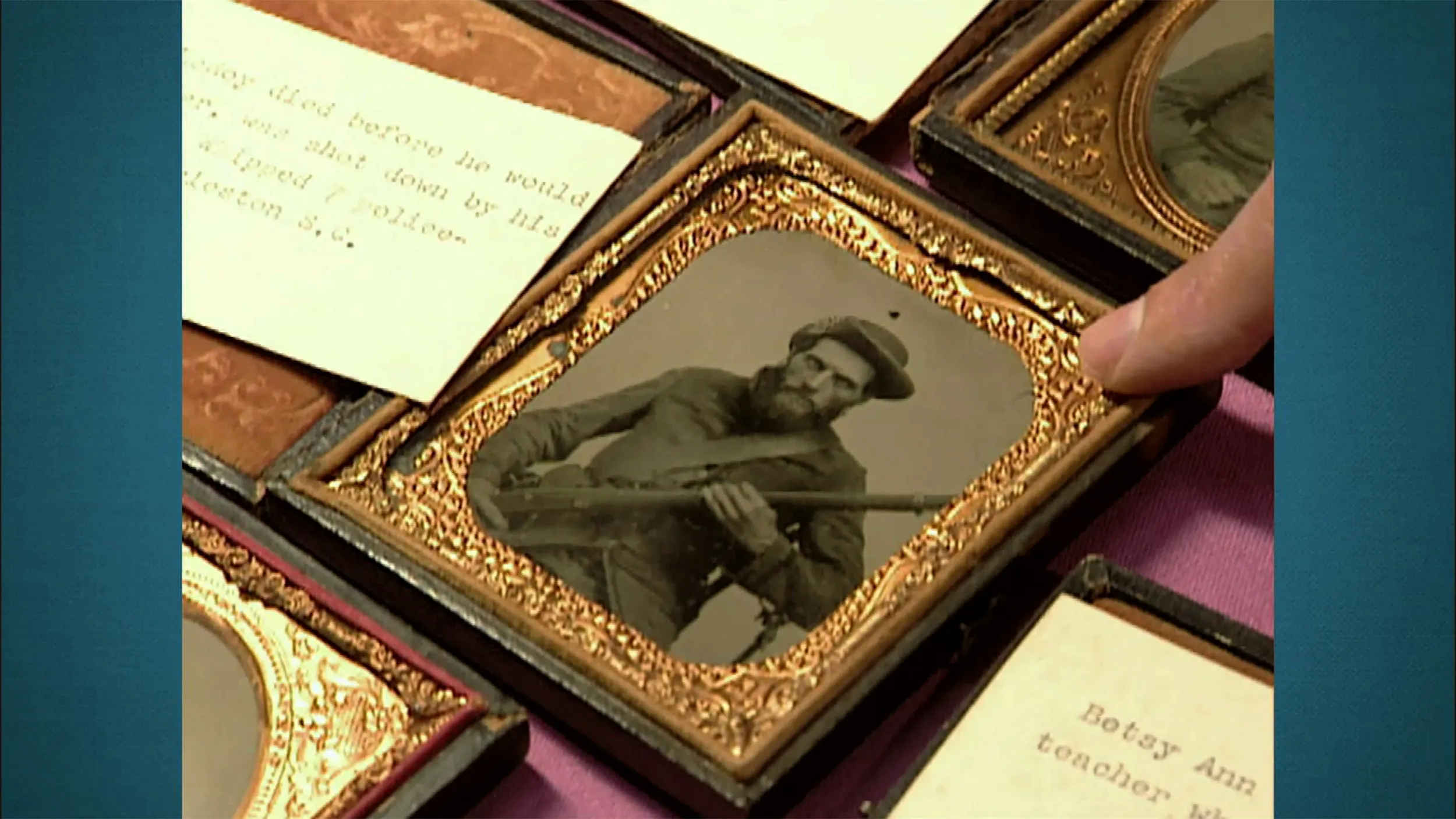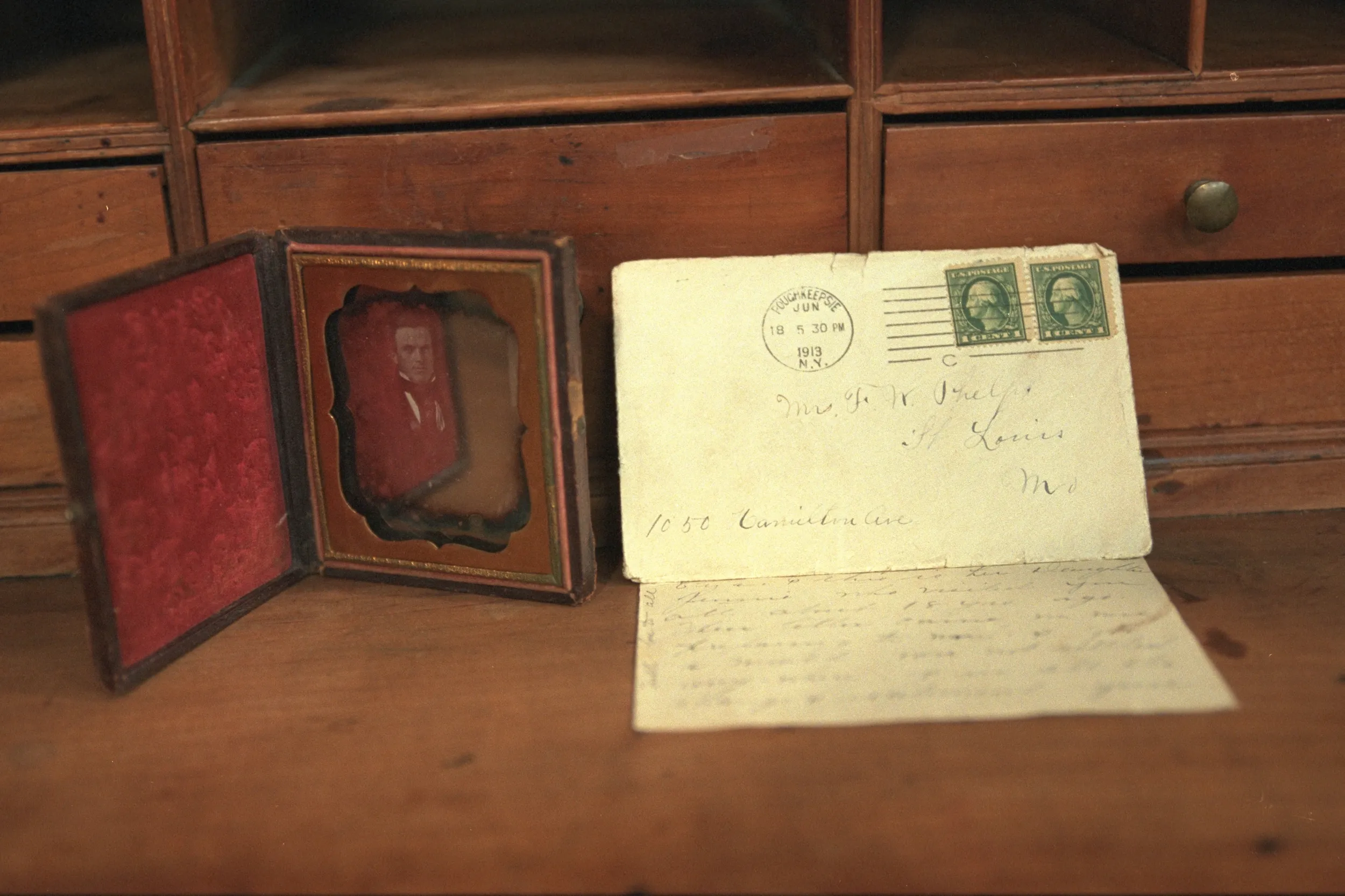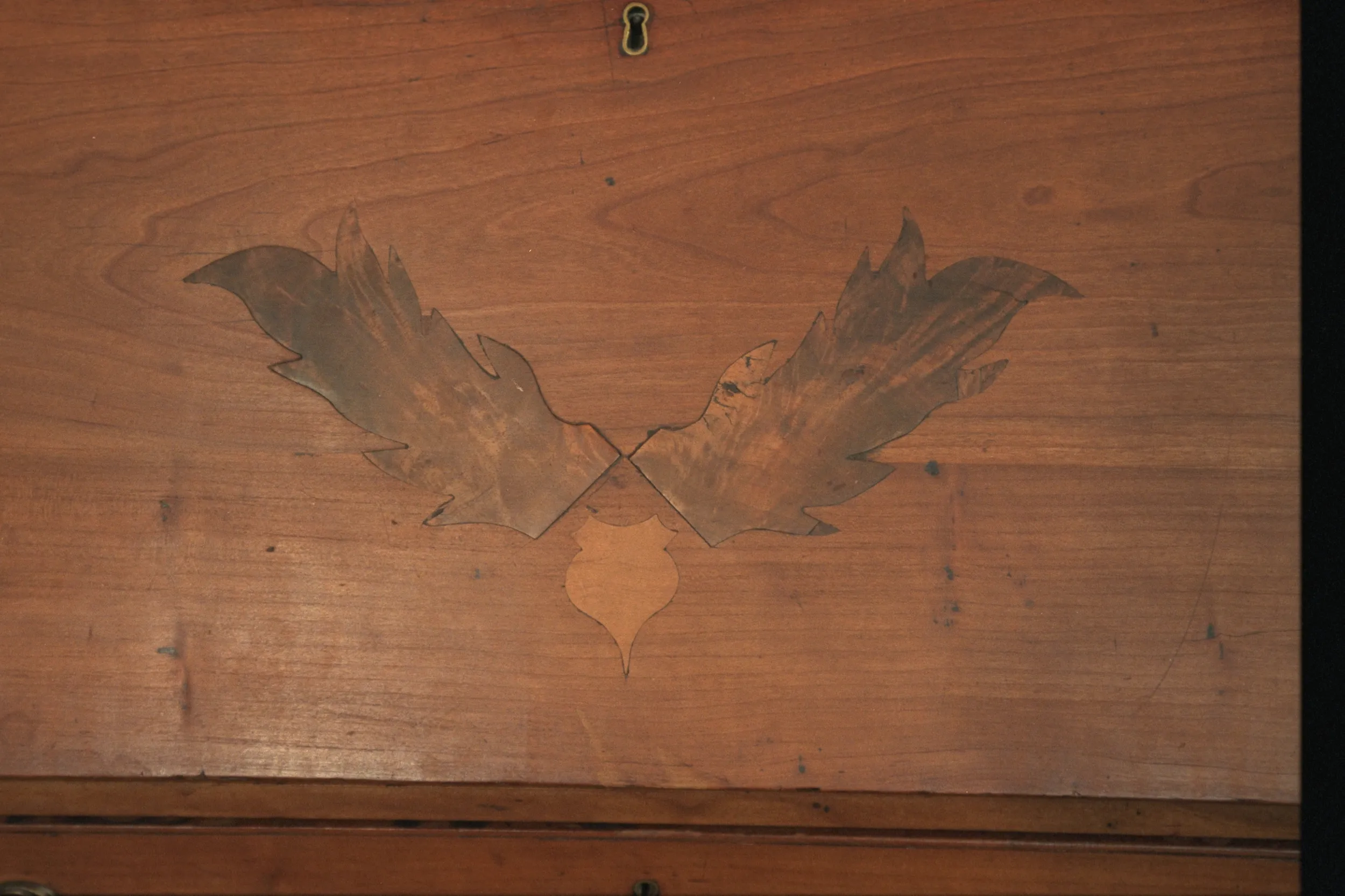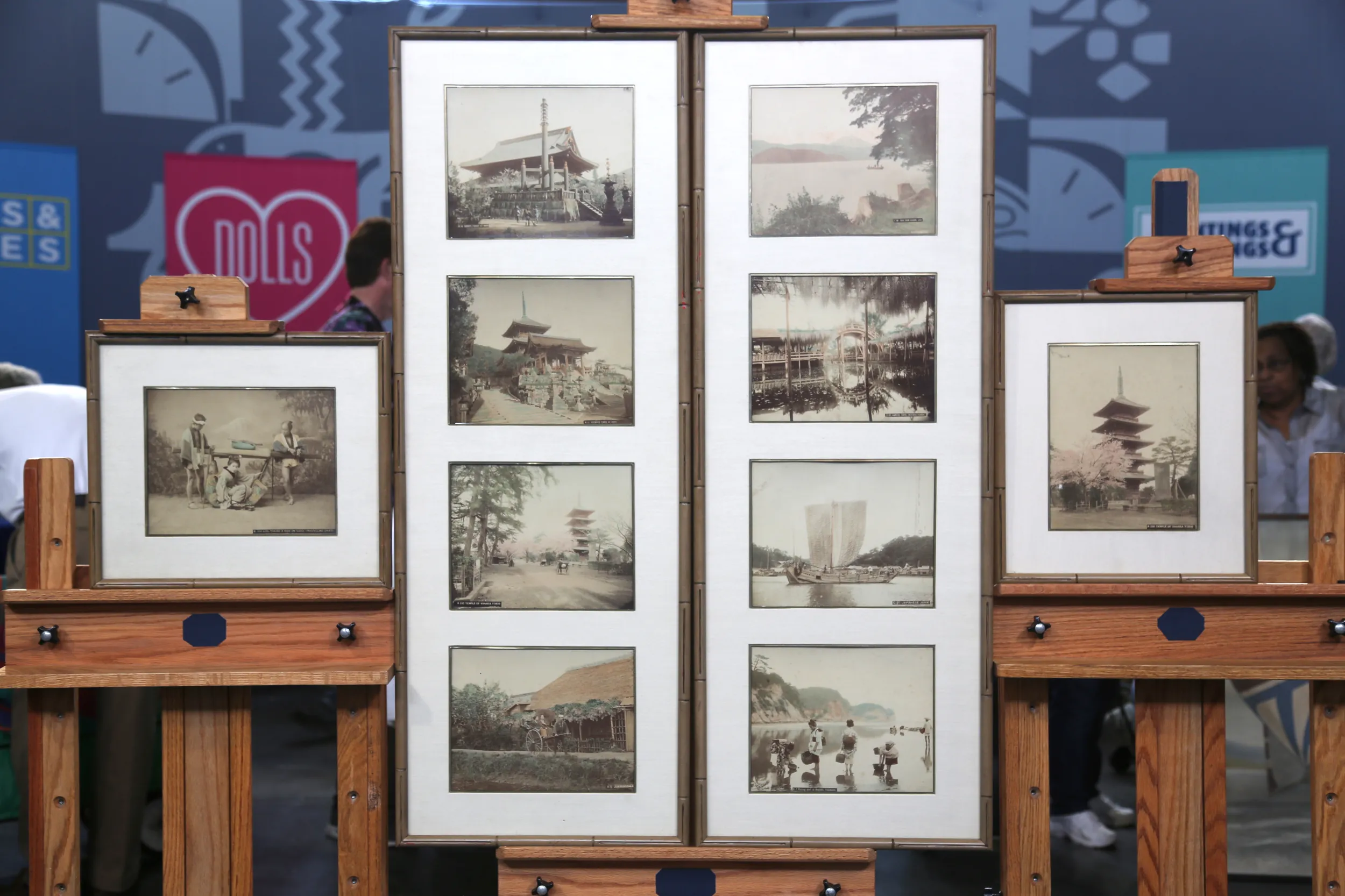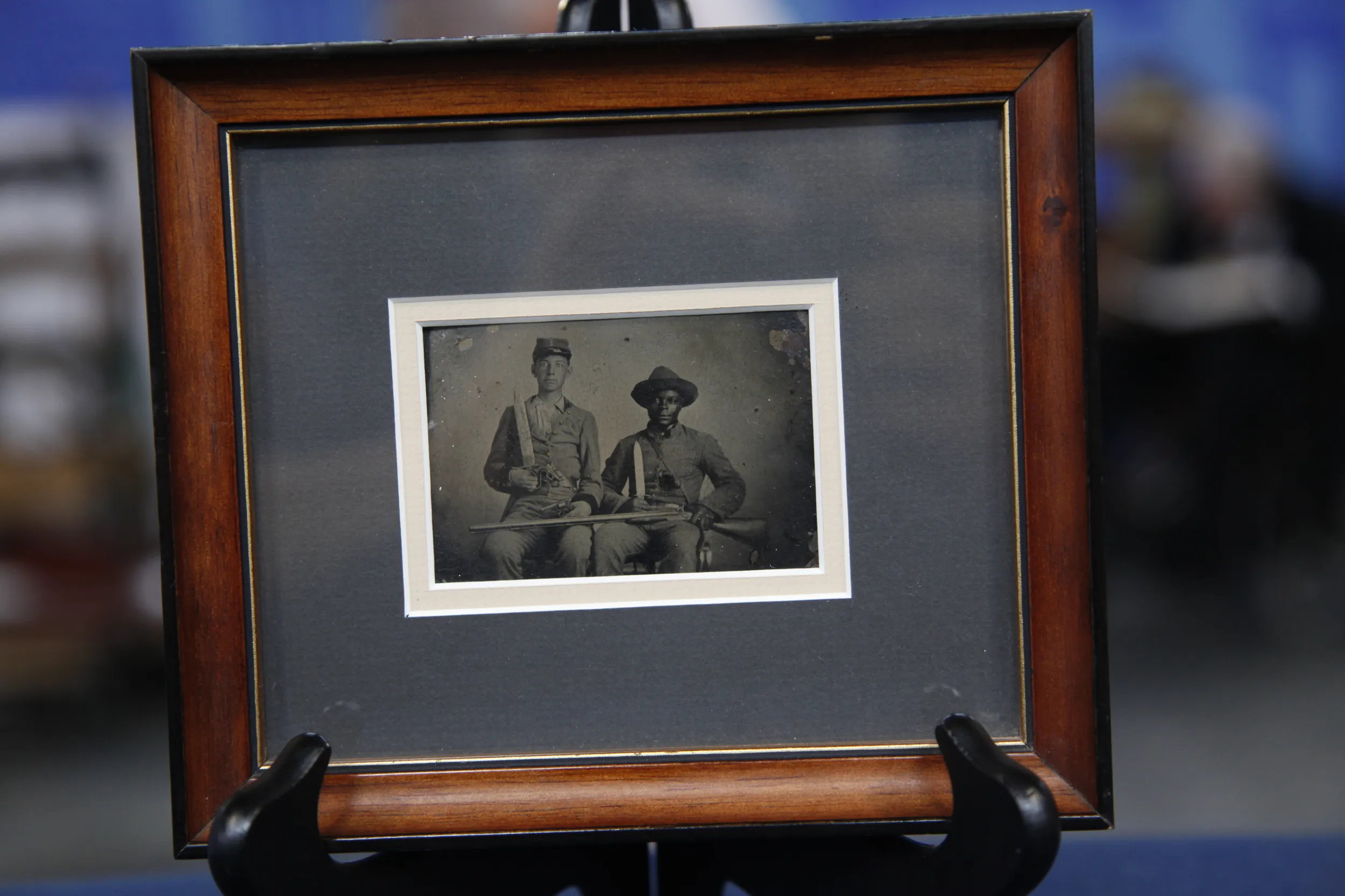GUEST: It's been in the family for over 200 years that we can document and trace back.
APPRAISER: Well, in fact, you were telling us a little bit about the family history, and then the desk came to you loaded with history, didn't it?
GUEST: Mm-hmm.
APPRAISER: We always look at furniture, the material, the way it was crafted, cherry wood, inlays, and in this particular case, when we saw the desk come in, we saw the feet had been cut off right at the bracket here. We also saw that the brasses had been replaced.
GUEST: Right.
APPRAISER: And we thought, well, it's not that valuable a piece because of its condition. But then you started telling us the history, and we'll just open it up here, and, in fact, you have letters from your great-grandmother?
GUEST: Yes, this would be a great-great-aunt, and she wrote this letter in 1913.
APPRAISER: Right, so we have a wonderful document from the turn of the century, just when Americans began to be really interested in their own history.
GUEST: Right.
APPRAISER: They seemed to care about the history of this desk, and these wonderful daguerreotypes for the original Phelps family owners. It really is a historical document as much as it is a piece of furniture. What we loved about the desk, however, was the inlay on the side of the desk, these magnificent tulips. And this is a repair to conjoin the case sides as it began to separate. I have never seen repair a piece with these magnificent tulips. Some call them "Dutchmen", and they're often just little hourglass-shaped pieces of wood that people put in, and it secures the piece. We think the desk might be worth $3,000 to $5,000. Thank you for bringing it in.
GUEST: No, thank you.

